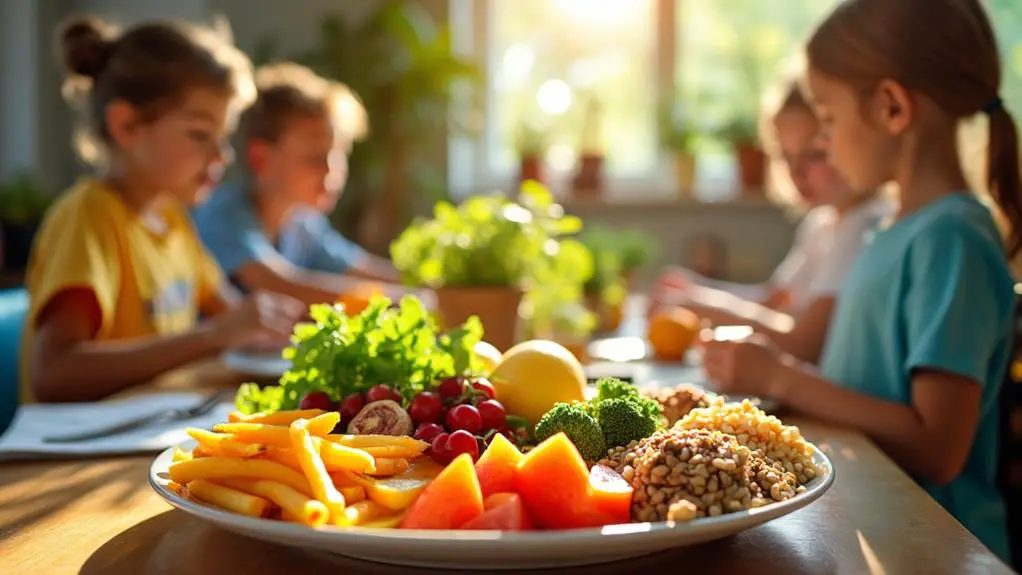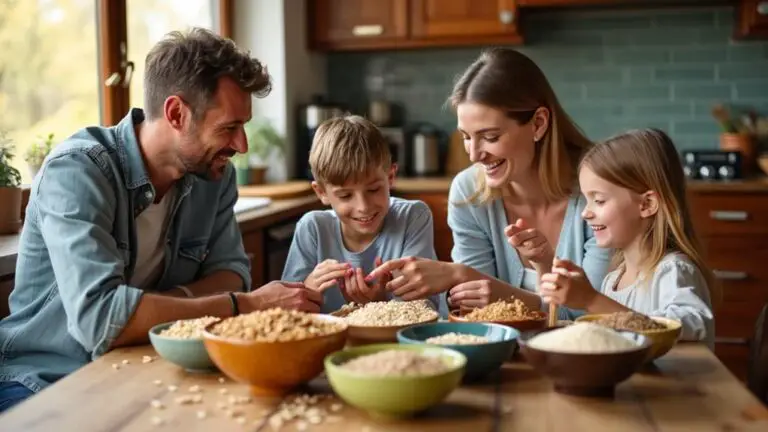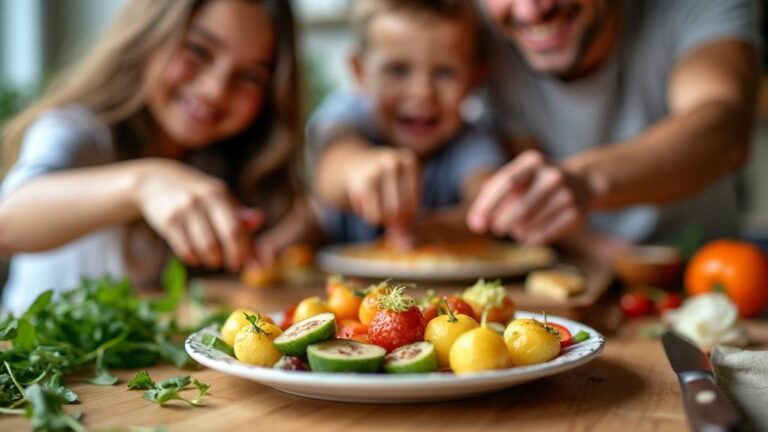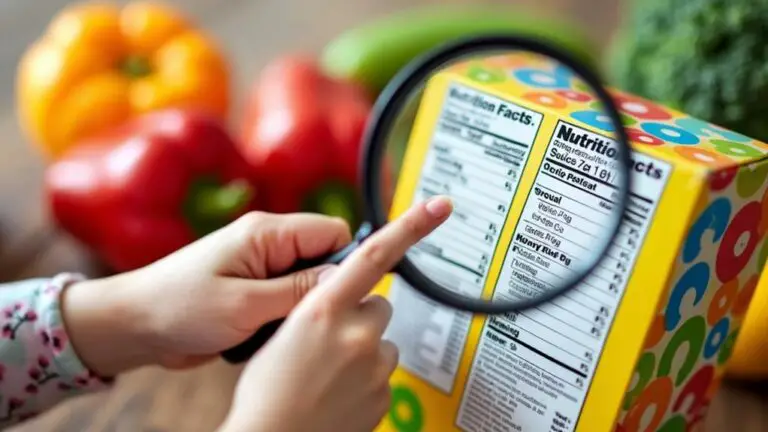Teaching Kids About the Connection Between Food and Energy
Teaching kids about food and energy is essential for their health and well-being. You can start by explaining how food acts as fuel for their bodies, providing energy for growth and daily activities. Use interactive activities like "Fuel Tag" or creating meal planning posters to make learning fun. Introduce the concept of energy transfer from sunlight to plants to animals, helping kids understand where their food comes from. Encourage them to make healthy choices by involving them in meal planning and emphasizing the benefits of different food groups. By exploring this connection, you'll empower kids to make informed decisions about their nutrition and overall health.
Key Takeaways
- Illustrate how sunlight fuels plant growth through photosynthesis, providing energy for fruits and vegetables we eat.
- Explain the concept of energy transfer as animals consume plants or other animals for sustenance.
- Use interactive activities like "Fuel Tag" to help kids identify healthy food choices that provide energy.
- Demonstrate how different food groups contribute to energy levels and overall health using MyPlate guidelines.
- Involve children in meal planning and cooking projects to reinforce the connection between food choices and energy.
Fuel for Young Bodies
From the moment they wake up, kids need a constant supply of energy to fuel their growing bodies and active minds. Food is the primary source of this essential energy, supporting growth, movement, and cognitive function. The body breaks down macronutrients like carbohydrates, proteins, and fats during digestion to power daily activities.
For ideal health and sustained energy, it's vital to provide kids with nutritious options. You can help your children maintain steady energy levels by following MyPlate recommendations. Fill half their plate with fruits and vegetables, and incorporate whole foods like whole grains, lean proteins, and healthy fats. These choices enhance energy availability compared to processed foods, which often lack essential nutrients.
Depending on age, sex, and activity level, young children require about 1,000 to 2,000 calories per day to meet their energy needs for growth and play.
Energy-Boosting Food Groups
Understanding the energy-boosting potential of different food groups is vital to fueling your child's active lifestyle. Introduce your kids to a variety of foods from all five food groups to guarantee they're getting a balanced mix of energy sources.
Whole grains like brown rice and quinoa provide complex carbohydrates for sustained energy, while fruits and vegetables offer vitamins and minerals that support both physical and mental performance.
Don't forget protein-rich foods such as lean meats, beans, and nuts, which are essential for muscle repair and growth. Dairy products contribute to energy levels and bone health, important for growing, active children.
Interactive Nutrition Activities

Now that you've introduced your kids to energy-boosting food groups, it's time to make nutrition education fun and engaging.
Encourage children to participate in activities like "Fuel Tag," where they'll identify healthy food choices while being physically active. Use the "How to Build a Meal" poster to help them visually plan balanced meals, reinforcing the importance of eating a variety of nutritious foods.
Incorporate toy vehicles to illustrate how our bodies, like machines, need proper fuel to function effectively. Utilize interactive games and quizzes from resources like USDA's MyPlate website to help kids assess their food choices and learn about nutritional values.
Finally, involve them in cooking projects such as "Make Sun Smores" to teach about healthy ingredients while connecting solar energy to food preparation.
These activities will help children understand the essential link between food and energy.
From Sunlight to Snacktime
As we explore the fascinating journey from sunlight to snacktime, it's crucial to understand the sun's role as the ultimate energy source for all food.
Plants harness sunlight through photosynthesis, creating the sugars that fuel life. When you eat fruits and vegetables, you're consuming energy that originated from the sun.
This energy transfer continues as animals eat plants or other animals, moving through the food chain.
Empowering Healthy Food Choices

Empowering children to make healthy food choices is a crucial step in their development. You can help kids understand the importance of nutritious foods by involving them in meal planning and encouraging them to choose healthy snacks. Use MyPlate as a visual guide to teach them about incorporating foods from all five food groups into their daily meals. This approach not only improves their nutrition but also enhances their energy levels, mood stability, and overall well-being.
| Food Group | Benefits for Kids |
|---|---|
| Fruits | Vitamins, fiber |
| Vegetables | Nutrients, energy |
| Grains | Sustained energy |
| Protein | Growth, strength |
Conclusion
You've begun a journey to enlighten young minds about the essential link between food and energy. Like Hansel and Gretel discovering the gingerbread house, you've led children through a forest of nutritional knowledge. Now, it's time to send them off with the tools to make wise choices. Remember, you're not just teaching about food; you're empowering a generation to fuel their bodies like well-oiled machines, ready to conquer any challenge that comes their way.







